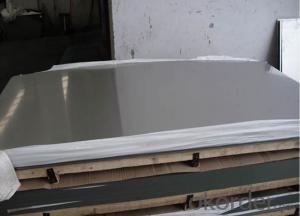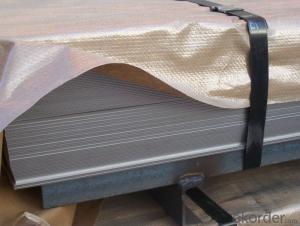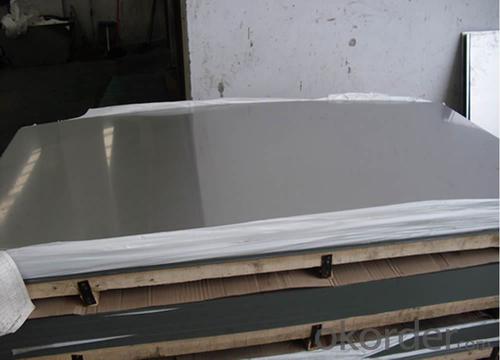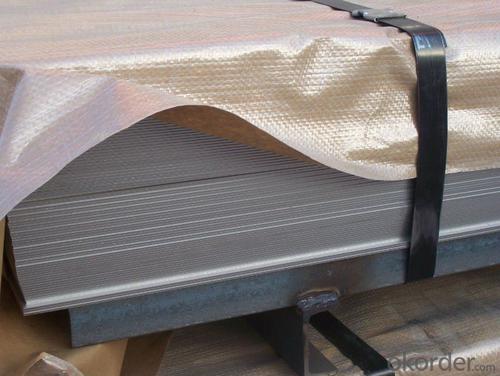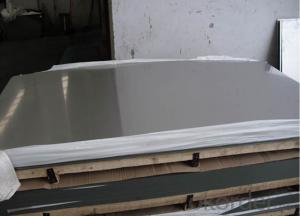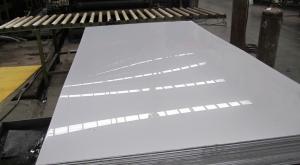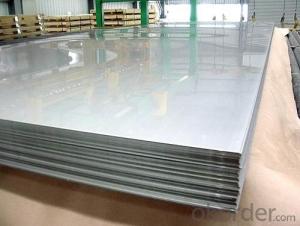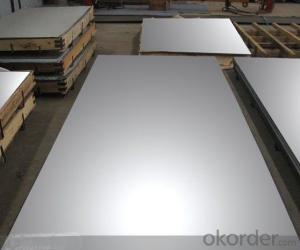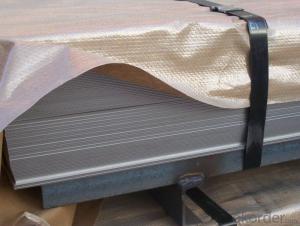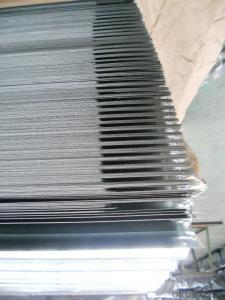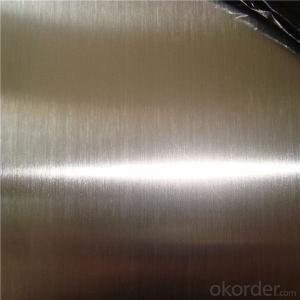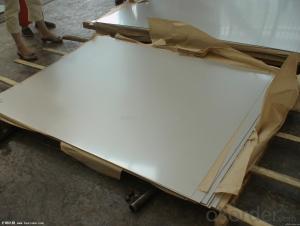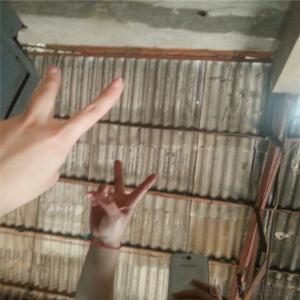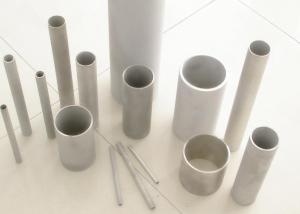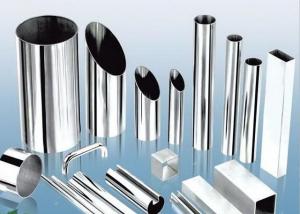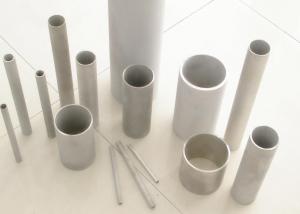Stainless Steel Sheet/Plate 309 High Temperature Resistance
- Loading Port:
- China main port
- Payment Terms:
- TT OR LC
- Min Order Qty:
- 50 m.t.
- Supply Capability:
- 10000 m.t./month
OKorder Service Pledge
OKorder Financial Service
You Might Also Like
Specification
Stainless Steel Sheet/Plate 309 with High Temperature Resistance
Description
304 stainless steel is the most widely used in the 300 series stainless steel. Its anti-corrosion property is stronger than the 200-series
stainless steel, but the anti-acid property is worse than 316. 304 stainless steel have a good resistance in high temperature and the
excellent corrosion resistance. 304 stainless steel is more expensive than 201, cheaper than the 316.
1. Commodity: 304 Stainless Steel
2. Technique: Cold Rolled/hot rolled Stainless Steel
3. Grade: 304 Stainless Steel
4. Type: Stainless Steel Sheet/coil
5. Finish: 2B/Ba/8K/Emboss/Etch
6. Edge: mill edge /silted edge
7.Size:1219mm*2438mm,1219mm*3048mm,or as customized
Main Features
•Escalator, Elevator, Doors
•Furniture
•Production tools, Kitchen appliances, freezers, cold rooms
•Auto Parts
•Machinery and Packaging
•Equipment and Medical devices
•Transport system
Specifications
Description | steel sheet,hot rolled steel sheet,cold rolled steel sheet, steel sheet,sheet,steel plate |
Standard | ASME, ASTM, EN ,BS,GB,DIN, JIS etc |
Application | Steel sheet applies to construction field, ships building industry, petroleum & chemical industries, war and electricity industries, food processing and medical industry, boiler heat exchanger, machinery and hardware fields. |
Surface Finish
Surface finish | Characteristics and application |
2B | The surface brightness and flatness of no2B is better than no2D. then through a special surface treatment to improve its mechanical properties,No2B could nearly satisfy comprehensive uses. |
No.1 | Polished with abrasive belt of grit#100-#200, have better brightness with discontinuous coarse stria, used as inner and external ornaments for building, electrical appliances and kitchen utensils etc. |
No.4 | Polished with abrasive belt of grit #150-#180,have better brightness with discontinuous coarse stria, but thinner than No3, are used as bathtub buildings inner and external ornaments electrical appliances kitchen utensils and food processing equipment etc. |
HL | Polished with abrasive belt of grit #150-#320 on the NO.4 finish and has continuous streaks, mainly used as buildings ornaments elevators, door of building, frontal plate etc. |
BA | Cold rolled, bright annealed and skin-passed, the product have excellent brightness and good reflexivity like mirror, kitchen apparatus, ornament etc. |
8K | The product have excellent brightness and prefer reflexivity can to be the mirror. |

- Q: Are stainless steel sheets suitable for industrial applications?
- Yes, stainless steel sheets are highly suitable for industrial applications. Stainless steel is a versatile and durable material that offers several key advantages for industrial use. Firstly, stainless steel is corrosion-resistant, making it ideal for industries that involve exposure to moisture, chemicals, or corrosive substances. It can withstand extreme temperatures, both high and low, without losing its strength or structural integrity. Stainless steel is also highly hygienic, making it suitable for industries such as food processing, pharmaceuticals, and medical equipment. Additionally, stainless steel sheets are known for their excellent strength-to-weight ratio, making them ideal for structural applications in industries such as construction, automotive, and aerospace. They can be easily formed, welded, and fabricated to meet specific requirements. Overall, stainless steel sheets offer a combination of strength, durability, corrosion resistance, and versatility, making them highly suitable for a wide range of industrial applications.
- Q: How do you remove oil stains from stainless steel sheets?
- To remove oil stains from stainless steel sheets, you can start by wiping the surface with a clean, soft cloth dampened with warm water and mild dish soap. If the stain persists, apply a small amount of vinegar or rubbing alcohol onto the cloth and gently rub the affected area. Rinse with water and dry thoroughly to avoid water spots.
- Q: Can stainless steel sheets be used for elevator cabs?
- Yes, stainless steel sheets can be used for elevator cabs. Stainless steel is a common material choice for elevator cabs due to its durability, aesthetic appeal, and resistance to corrosion. It provides a sleek and modern look while also being able to withstand the wear and tear of daily use in elevators.
- Q: Are stainless steel sheets suitable for high-temperature applications?
- Yes, stainless steel sheets are suitable for high-temperature applications. Stainless steel is known for its excellent heat resistance properties, making it an ideal material for use in high-temperature environments. It can withstand extreme heat without losing its strength or structural integrity, making it highly durable and reliable. Stainless steel sheets are often used in industries such as aerospace, automotive, and manufacturing, where high temperatures are common. Additionally, stainless steel sheets have low thermal expansion, which means they can maintain their shape and dimensions even when exposed to fluctuating temperatures. This makes stainless steel sheets a preferred choice for applications where dimensional stability is crucial. Overall, stainless steel sheets are a suitable option for high-temperature applications due to their exceptional heat resistance, durability, and dimensional stability.
- Q: How do you determine the best thickness of stainless steel sheet for a specific application?
- To determine the best thickness of stainless steel sheet for a specific application, several factors need to be considered. These factors include the required strength, durability, and corrosion resistance for the application, as well as any weight or cost limitations. It is also crucial to analyze the mechanical and chemical properties of the stainless steel and evaluate its compatibility with the intended environment and potential stress factors. Engineering calculations, industry standards, and consultation with material experts or engineers can help in making an informed decision about the appropriate thickness for the stainless steel sheet.
- Q: Are stainless steel sheets resistant to scratches?
- Yes, stainless steel sheets are generally resistant to scratches due to their composition and protective layer. However, the degree of scratch resistance may vary depending on the specific grade and finish of the stainless steel.
- Q: Are stainless steel sheets suitable for food packaging equipment?
- Yes, stainless steel sheets are highly suitable for food packaging equipment. Stainless steel is a popular choice in the food industry due to its numerous advantageous properties. First and foremost, stainless steel is non-reactive, meaning it does not interact with food or alter its taste, smell, or appearance. This makes it safe for direct contact with food products. Additionally, stainless steel is resistant to corrosion, rust, and staining, which ensures the durability and longevity of the equipment. It is also easy to clean and sanitize, making it ideal for maintaining high levels of hygiene required in food packaging processes. The smooth surface of stainless steel sheets minimizes the risk of bacterial growth and simplifies the cleaning process. Furthermore, stainless steel has excellent strength and heat resistance properties, allowing it to withstand high temperatures without deforming or compromising its structural integrity. This is particularly important in food packaging equipment where heat sealing or thermal processing is involved. In conclusion, stainless steel sheets are highly suitable for food packaging equipment due to their non-reactive nature, corrosion resistance, ease of cleaning, and high strength. These qualities make stainless steel a reliable and hygienic choice for ensuring the safety and quality of food products during packaging processes.
- Q: What are the advantages of using stainless steel sheets in the aerospace industry?
- Using stainless steel sheets in the aerospace industry has several advantages. Firstly, stainless steel is renowned for its remarkable strength and durability. It can endure high temperatures and extreme conditions, making it perfect for aircraft components that require superior performance and long lifespan. This strength allows stainless steel sheets to resist corrosion, which is crucial in an industry where safety is paramount. Secondly, stainless steel sheets offer excellent resistance to impact and fatigue. This is particularly important in the aerospace sector, where components are constantly subjected to vibrations and stress. Stainless steel can absorb these forces without compromising its structural integrity, ensuring the safety and reliability of the aircraft. Thirdly, stainless steel sheets possess a high strength-to-weight ratio, making them lightweight yet strong. This is essential in aviation, where reducing weight is a primary concern for fuel efficiency and overall performance. By utilizing stainless steel sheets, aircraft manufacturers can achieve the desired strength without adding unnecessary weight, leading to improved fuel economy and increased payload capacity. Furthermore, stainless steel sheets are highly versatile. They can be easily formed, welded, and machined into intricate shapes and sizes, allowing for the production of complex aerospace components. This versatility enables engineers to design and manufacture innovative aircraft parts, resulting in improved aerodynamics, reduced drag, and enhanced overall performance. Lastly, stainless steel sheets exhibit excellent heat resistance properties. They can endure high temperatures without losing their strength or shape, making them ideal for applications that involve exposure to extreme heat, such as jet engines or exhaust systems. This heat resistance ensures the longevity and reliability of these critical components, contributing to the overall safety and efficiency of aircraft. In conclusion, the advantages of using stainless steel sheets in the aerospace industry include exceptional strength and durability, resistance to impact and fatigue, high strength-to-weight ratio, versatility in manufacturing complex components, and excellent heat resistance properties. These qualities make stainless steel sheets an optimal choice for aircraft manufacturers, guaranteeing the safety, reliability, and efficiency of aerospace vehicles.
- Q: Can stainless steel sheets be used for medical instrument trays?
- Yes, stainless steel sheets can be used for medical instrument trays. Stainless steel is a commonly used material in the medical industry due to its excellent corrosion resistance, durability, and ease of cleaning. Medical instrument trays are used to store and organize various medical instruments during procedures. Stainless steel sheets are ideal for this purpose as they are non-reactive and can withstand frequent sterilization processes such as autoclaving. Additionally, stainless steel has a smooth surface that is resistant to scratches and dents, ensuring the trays remain hygienic and easy to clean. Overall, stainless steel sheets are a reliable and suitable material choice for medical instrument trays.
- Q: Can stainless steel sheets be used for architectural purposes?
- Yes, stainless steel sheets can be used for architectural purposes. This material is highly versatile and offers excellent durability, corrosion resistance, and aesthetic appeal, making it a popular choice for architectural applications such as facades, cladding, roofing, and decorative features. Stainless steel sheets can be shaped, formed, and finished to meet various design requirements, making them suitable for both functional and decorative architectural elements.
Send your message to us
Stainless Steel Sheet/Plate 309 High Temperature Resistance
- Loading Port:
- China main port
- Payment Terms:
- TT OR LC
- Min Order Qty:
- 50 m.t.
- Supply Capability:
- 10000 m.t./month
OKorder Service Pledge
OKorder Financial Service
Similar products
Hot products
Hot Searches
Related keywords
